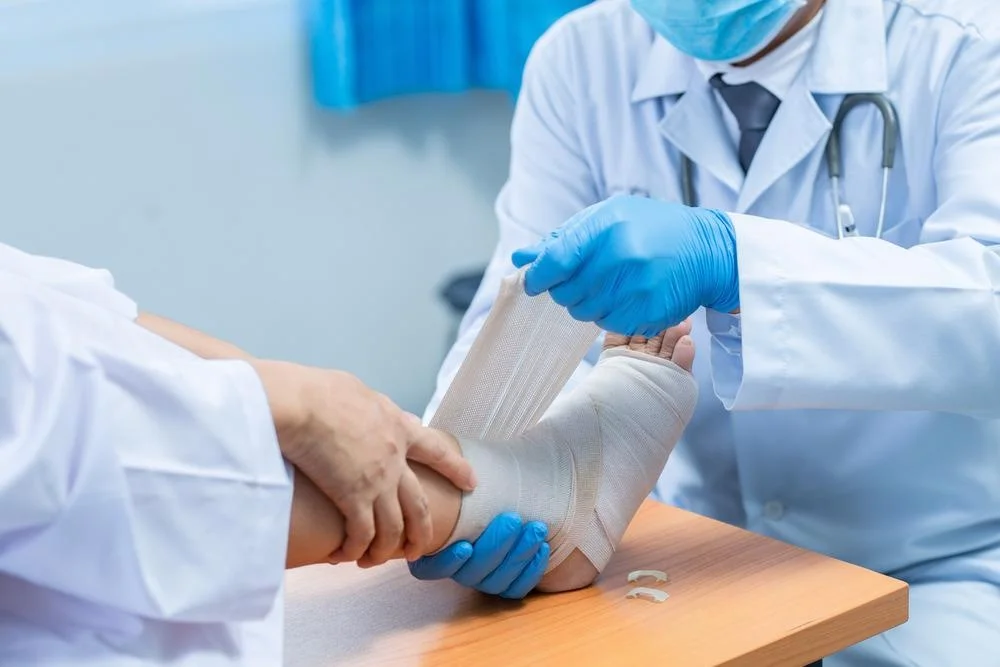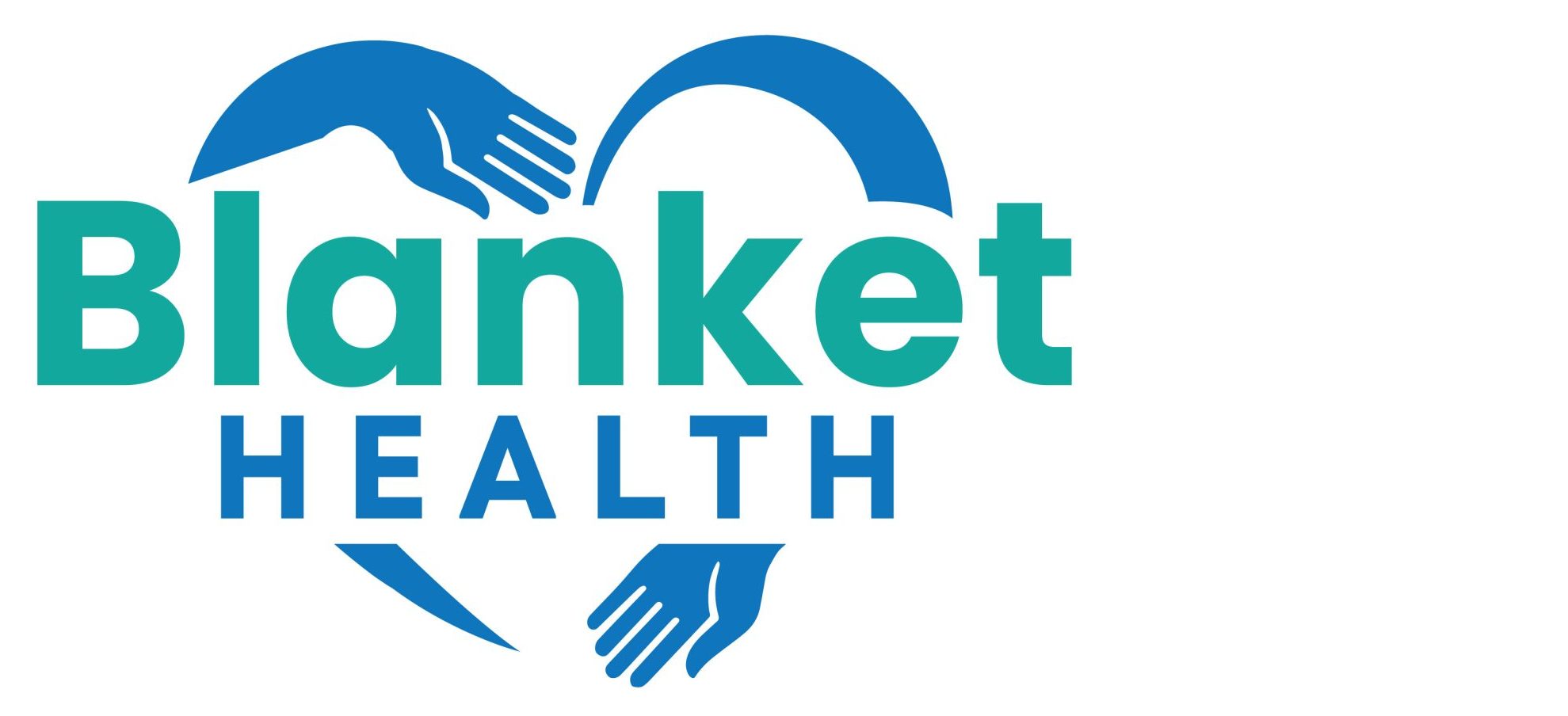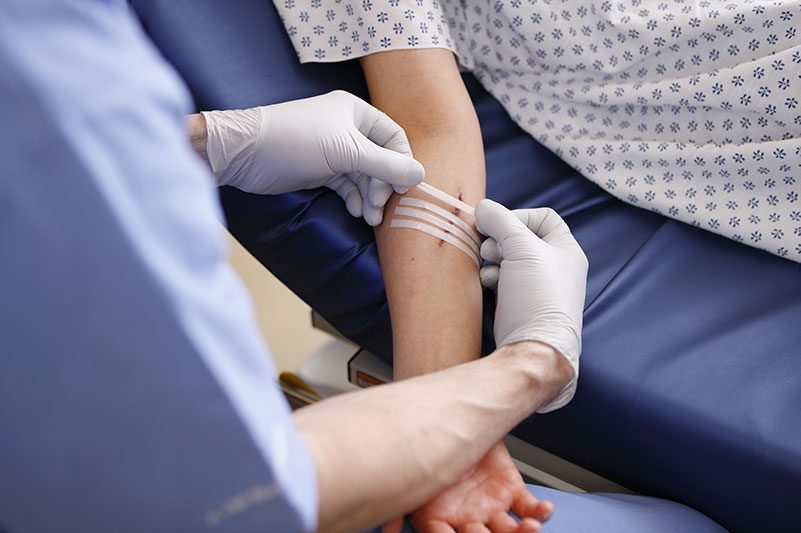Speeding up the healing process and supporting a swift recovery for wound care and sutures involves a combination of proper wound care, lifestyle choices, and overall health maintenance. Here are some helpful things you can do:
Follow Medical Instructions: Adhere to the specific wound care instructions provided by your healthcare provider. This may include how to clean the wound, when to change dressings, and any prescribed medications.
Maintain Good Hygiene: Keep the wound and the surrounding area clean and dry to prevent infection. Wash your hands thoroughly before touching the wound or changing dressings.
 Stay Hydrated: Proper hydration supports overall healing. Drink an adequate amount of water each day to help maintain tissue health.
Stay Hydrated: Proper hydration supports overall healing. Drink an adequate amount of water each day to help maintain tissue health.
Eat a Nutrient-Rich Diet: Consume a balanced diet rich in vitamins, minerals, and protein. Nutrients like vitamin C, zinc, and protein are essential for tissue repair and collagen production.
Avoid Smoking and Alcohol: Smoking and excessive alcohol consumption can slow down the healing process. If possible, reduce or quit these habits during your recovery.
Get Adequate Rest: Allow your body to heal by getting enough sleep and rest. Resting helps your immune system work efficiently and aids in tissue repair.
Manage Stress: High stress levels can negatively impact healing. Engage in relaxation techniques, such as deep breathing exercises, meditation, or yoga, to manage stress effectively.
Exercise Gently: Light physical activity, as recommended by your healthcare provider, can stimulate circulation and promote healing. Avoid strenuous exercise or activities that might strain the wound.
Protect the Wound: Depending on the location and type of wound, protect it from further injury or trauma. Use bandages, dressings, or supportive devices as needed.
Avoid Excessive Moisture: Keep the wound dry to prevent maceration, a condition where the skin softens due to excessive moisture. However, follow your healthcare provider’s advice on wound moisture management.
Follow Medication Guidelines: If your healthcare provider prescribes antibiotics or other medications, take them as directed. Finish the entire course of antibiotics, even if the wound appears to be healing well.
Stay Informed: Keep in touch with your healthcare provider and attend any scheduled follow-up appointments. They can monitor your progress, provide guidance, and address any concerns promptly.
Manage Pain Appropriately: If you experience pain or discomfort, take over-the-counter pain relievers as recommended by your healthcare provider. Avoid aspirin, as it can increase the risk of bleeding.
Stay Positive: A positive mindset and a sense of well-being can positively influence the healing process. Engage in activities you enjoy, maintain social connections, and seek support from friends and family.
Avoid Tight Clothing: Avoid wearing tight or restrictive clothing over the wound area to prevent friction and irritation.
Remember that the speed of healing can vary depending on the type and location of the wound, as well as individual factors like age and overall health. It’s essential to consult your healthcare provider for personalized guidance and to address any specific concerns related to your wound care and recovery.



 Sutures, also known as stitches, are commonly used to close surgical incisions and wounds that have clean, straight edges. The timing of suture removal varies depending on the type of sutures used and the location of the wound. Typically, sutures are removed within 7 to 14 days, but your healthcare provider will provide specific guidance. Here are the steps for safe suture removal:
Sutures, also known as stitches, are commonly used to close surgical incisions and wounds that have clean, straight edges. The timing of suture removal varies depending on the type of sutures used and the location of the wound. Typically, sutures are removed within 7 to 14 days, but your healthcare provider will provide specific guidance. Here are the steps for safe suture removal: Stay Hydrated: Proper hydration supports overall healing. Drink an adequate amount of water each day to help maintain tissue health.
Stay Hydrated: Proper hydration supports overall healing. Drink an adequate amount of water each day to help maintain tissue health.
